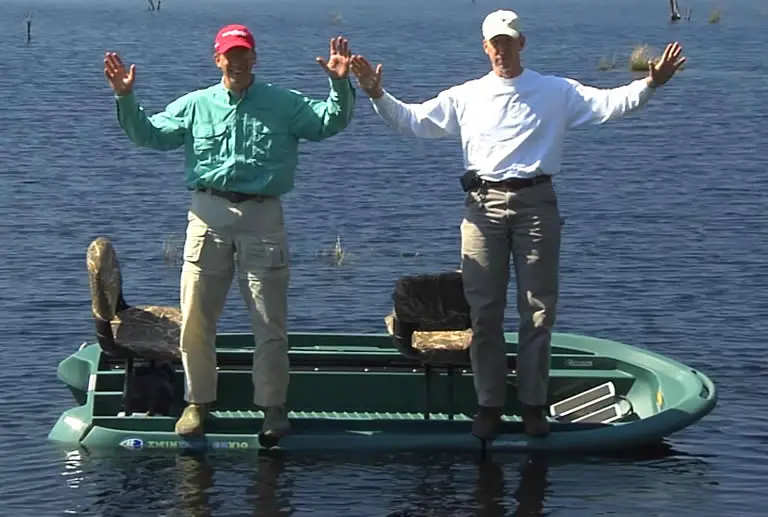Contents
- How to make a Jon boat more stable
- First discover what is making your Jon boat unstable
- Contributing onboard factors & fixes for instability on a Jon boat
- The hull design can cause stability issues in certain environments and under certain conditions
- The size of the boat and number of crew onboard can contribute to stability issues
- The inexperience of passengers can sometimes cause stability problems
- Contributing external factors to Jon boat instability & fixes
- First discover what is making your Jon boat unstable
- 3 BOAT MODIFICATIONS FOR STABILIZING YOUR JON BOAT
- Add buoyancy at key points on the boat to give it extra stability
- The one popular mod added for stability that DOESN’T actually stabilize your boat!
How to make a Jon boat more stable
A Jon boat can be stabilized by widening the hull, adding flotation pods to the stern or using hollow pontoon tubes at each side of the boat. To further stabilize a Jon boat ensure the load is distributed evenly. You can also add materials to make the boat more buoyant though this will have a greater effect on safety rather than stability. The 3 most effective modifications and add-ons for stabilizing a Jon boat are:- Widening the hull will greatly stabilize a Jon boat.
- Adding floatation pods to the stern will help stabilize a Jon boat.
- Attaching pontoon tubes to each side of a Jon boat will stabilize it.
First discover what is making your Jon boat unstable
Although there are people who refer to some semi-v and v-hulls as a Jon boat they are incorrect. A Jon boat will always have a flat bottom because it was designed to traverse calm shallow water. This flat bottom design makes Jon boats popular among water-based hunters, fishermen and those who need a utility boat to traverse shallow waterways. V-hull boats are not Jon boats. There is no such thing as a V-hull Jon boat. If you need a better understanding of exactly what a Jon boat is read this article. Jon boats are fairly small water crafts designed for individual use or for use by a very small crew (usually two persons) and they can perform a variety of functions. They vary in width starting from less than three feet to more than twice that. This difference in size can result in big variations in their initial/reserve stability. In this regard the location of the crew which is almost always the heaviest load on the boat, and their movements greatly affects the boat’s stability. On-board weight can have an adverse effect on overall stability which can be sensed by the crew if the boat is heavily laden. Even in calm, flat waters, instability issues are raised due to increased weight capacity. A heavily laden Jon boat creates instability that can be felt even when fishing, even in calm small lakes and rivers where they are usually expected to give their best performance. But these are not the only factors that make a Jon boat unstable; there are both onboard and external factors.Contributing onboard factors & fixes for instability on a Jon boat
There are several onboard factors that can contribute to the instability of a Jon boat.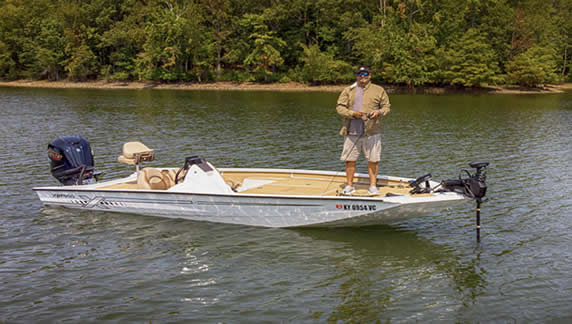 Below are some of the most common onboard factors that can affect a Jon boats’ stability with suggestions for increasing stability.
Below are some of the most common onboard factors that can affect a Jon boats’ stability with suggestions for increasing stability.
- Hull design
- Size of boat & number of crew
- Experience of crew and passengers
- Load
The hull design can cause stability issues in certain environments and under certain conditions
The shallow draft of the Jon boats flat bottomed hull design makes it extremely well suited to very shallow waters and waterways where V-hull boats cannot access. In calm waters a flat bottom boat, such as a Jon boat, gives a much more comfortable ride. However, in choppy waters it will experience stability issues. There are some modified Jon boats that feature a hull that is partially ‘V’ shaped which are referred to as Semi-V hulls. These semi-V hulls have a deeper draft but offer better performance in choppy waters. Strictly speaking they are not Jon boats as once modified the boat will be limited to the types of waters it can access due to its increased draft. If you have to traverse waters that are normally choppy then a semi-v is a great option but be aware of it limitations in shallow water.The size of the boat and number of crew onboard can contribute to stability issues
Any Jon boat that’s narrower than 48″ might not be stable enough for a tandem crew. If you use your Jon boat as a solo vessel then this will not be a problem. However, if you are experiencing instability with a crew then this may well be a contributing factor. Using one of the longer Jon boat models, that are 48″ and above, means much more stability when accommodating larger crews. These larger vessels rarely get tossed about as much in choppy waters and can utilize large horsepower motors for more power and speed.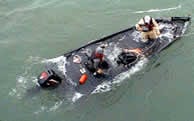 In addition, larger Jon boats are able to hold more of a load such as coolers, fishing equipment and duck decoys and this load can be spread more evenly over the deck.
For better stability remember that longer and wider Jon boats are more stable.
For Jon boats that are less than 20 feet long, there is a simple equation to work out how many crew is safe to carry in fair weather and calm waters (a Jon boat is not suited for use in bad weather and very choppy waters.
In such conditions you would be better with a semi-v or a full v-hull).
In addition, larger Jon boats are able to hold more of a load such as coolers, fishing equipment and duck decoys and this load can be spread more evenly over the deck.
For better stability remember that longer and wider Jon boats are more stable.
For Jon boats that are less than 20 feet long, there is a simple equation to work out how many crew is safe to carry in fair weather and calm waters (a Jon boat is not suited for use in bad weather and very choppy waters.
In such conditions you would be better with a semi-v or a full v-hull).
The following rule should apply when calculating the number of crew the boat should carry: Jon boat length in feet [multiplied by] boat width in feet [divided by] 15 = maximum crew sizeTo better understand this I have included an example below. Example: Jon boat size = 15 ft x 4 ft So, 15 x 4 = 60 Then, 60 / 15 = 4 So, a 15 ft x 4 ft Jon boat should have a maximum crew compliment of 4.
The inexperience of passengers can sometimes cause stability problems
If you experience a lot of instability while you have passengers onboard it could be due to their lack of experience on the water. Experienced boat users tend to forget that they have amassed a lot of experience as far as stability goes and so overlook the naivety of new crew or passengers. When a boat lists to one side experienced crew will automatically adjust their positions to compensate. This rarely happens with novice boat users and passengers who are not used to the water. Thus causing instability on the boat. Although this is a problem in all types of small boats it is especially noticeable on a Jon boat due to its shallow draft and close proximity to the waterline. The only way to fix this problem on a Jon boat is to train any inexperienced passengers or crew how to deal with listing. If the problem persists you may want to change crew or get a semi-v or full v-hull boat instead.Contributing external factors to Jon boat instability & fixes
There are several external factors that can contribute to the instability of a Jon boat. Below are 3 external factors that affect a Jon boats’ stability with suggestions for increasing stability.- Unsuitable conditions
- Speed
- Backwash
Unsuitable conditions for a Jon boat can cause serious stability issues
Having a very shallow draft a Jon boat is very unstable in choppy conditions. This makes them unsuitable for ocean use. With no depth to the hull the boat will react badly to waves and become unsafe. Even larger and wider Jon boats will not far well in very choppy conditions.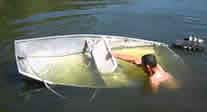 This is why a Jon boat should not be used in open water or in bad weather conditions; it is designed for calm water usage.
By far the biggest benefit of using a Jon boat is its shallow draft, designed for calm shallow waters.
If you find yourself continually having to battle stability issues due to choppy waters then you will probably be better swapping your Jon boat for a semi-v or full v-hull boat.
If you absolutely need a flat bottom boat, due to the shallow waters you have to traverse, then you should avoid launching your Jon boat in very choppy conditions.
This is why a Jon boat should not be used in open water or in bad weather conditions; it is designed for calm water usage.
By far the biggest benefit of using a Jon boat is its shallow draft, designed for calm shallow waters.
If you find yourself continually having to battle stability issues due to choppy waters then you will probably be better swapping your Jon boat for a semi-v or full v-hull boat.
If you absolutely need a flat bottom boat, due to the shallow waters you have to traverse, then you should avoid launching your Jon boat in very choppy conditions.
High speed in choppy waters and large waves will make a Jon boat unstable
Due to its flat hull, a motorized Jon boat is easily destabilized when going through even the smallest of lateral waves at high speeds (see our article about Jon boats in rough water). In such cases, the inadequacy of lateral stability can become very problematic. In calm waters a Jon boat gives an exceptionally smooth ride at high speed. However, unlike a v-hull boat, that is capable of going through waves and not just on top of them, a Jon boat with its flat bottom can only ride on top of the water. It is therefore capable of speed on calm flat water only. It is therefore not unusual to see owners of such boats reducing speed considerably and heading back home quickly as soon as the wind picks up. As you can see Jon boats are not considered seaworthy crafts due to their inability to handle waves and choppy water. However, some people still use them for ocean fishing but in extremely favorable weather conditions. We covered this subject in more detail in this article.Backwash from larger vessels can quickly destabilize a Jon boat
As we have seen a Jon boat does not react well to choppy waters so it stands to reason that it will react just as poorly to the backwash from other boats. This is a particularly pronounced problem if the backwash is coming from a speed boat. It is therefore advisable to use a Jon boat in areas that are free from motorboat traffic. At the very least in an area where motorboat traffic is at a minimum and far enough away to not cause problems.3 BOAT MODIFICATIONS FOR STABILIZING YOUR JON BOAT
As well as addressing the issues mentioned above there are a few other things you can do to help stabilize your Jon boat. These require you to make modifications to the boat itself. Let’s take a look at them now.1. Widen your Jon boat
Usually, people increase the size of their boats so that they can have enough space for equipment and passengers. However, an important additional benefit of increasing the width of your Jon boat is the increase in stability it offers. When you widen the boat there is also another positive benefit that occurs – you can also increase the size of the motor.A wider boat means more power as well as better stability
So you understand how much extra power you can have when you widen your boat take a look at the bullet list below. Here is a list of Jon boat sizes along with the size of the motor that is ideal for them.- 10 ft Jon boat– max 3 hp engine
- 12 ft – max 10 hp engine
- 14 ft – max 15 hp engine
- 14 ft wide beam – max 25 hp engine
- 16 ft – max 35 hp engine
- 18 ft – max 65 hp engine
- 48 inches for a 10 ft boat
- 48 inches to 60 inches for a 12 ft boat
- 57 inches to 70 inches for a 14 ft boat
- 75 inches for an 18 ft boat.
How to make a Jon boat wider
Widening any boat is not an easy task and requires a large work area. Although the exact steps may differ slightly depending on what material your Jon boat is made from the procedure is pretty much the same. To widen a Jon boat you first need to split your upturned boat in half, right down the middle. You then separate the halves to a distance where if they were connected the boat would be your new desired width. Then add ribs all along the bottom of the boat to connect both halves. After that add a transom to reinforce the stern. Then you lay the new sheets of boat material over the ribs and attach them to each side of the boat and to the ribs. To have a better understanding of how this works have a look at the video below where a guy widens his aluminum Jon boat for about $400. There are wider Jon boats available to buy. To read about these type of Jon visit the post what is a double wide Jon boat.Add buoyancy at key points on the boat to give it extra stability
Adding buoyancy to your Jon boat will not only counteract the effects of a heavy load and make the boat ride higher in the water but it will also greatly increase the boat’s stability. Making a Jon boat more buoyant is not a difficult task and there are a few different approaches you can use. Here I outline 2 very effective strategies for adding buoyancy to your Jon boat. Making the boat more buoyant will have the added effect of making your boat much safer and harder to sink while also making it more stable in the water. The best place to add buoyancy to your Jon boat is the stern as this is where the heaviest parts of the boat are located; the stern houses the engine, gas tank and the battery. If it is possible you should try to move some of the heavier items to the front of the boat to even out the load. However, you can greatly increase buoyancy by adding flotation pods to this area to help counteract the heavy items housed there.2. Add flotation pods at the stern for more buoyancy and better stability
One way to make your Jon boat more buoyant is to use boat stabilizers on the boat. One of the best stabilizers you can use are flotation pods which you can attach to the stern of your Jon boat. This also has the effect of greatly stabilizing the boat.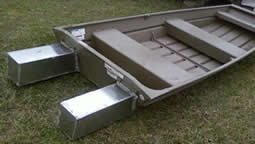 You must add these flotation pods to the outside of the boat.
Contrary to popular opinion adding “flotation” at the transom inside the boat will not lift the stern.
Any flotation added at the stern, unless it is added to the outside of the boat, will only add extra weight and make the stern ride even lower in the water.
One thing manufacturers have done is to combat the low ride of the stern is to make the transom like an A frame, with the motor set back.
This way it deflects waves to the side rather than allowing them to crash over the transom.
But this only stops water from splashing onboard and does not help lift the stern higher in the water.
To get the stern to ride higher many boat owners resort to shifting weight forward in their boat however that may cause other undesirable effects.
So, the best way to raise the stern is to add flotation pods on the outside of the boat, one to each side at the aft of the boat as shown in the picture above right.
You must add these flotation pods to the outside of the boat.
Contrary to popular opinion adding “flotation” at the transom inside the boat will not lift the stern.
Any flotation added at the stern, unless it is added to the outside of the boat, will only add extra weight and make the stern ride even lower in the water.
One thing manufacturers have done is to combat the low ride of the stern is to make the transom like an A frame, with the motor set back.
This way it deflects waves to the side rather than allowing them to crash over the transom.
But this only stops water from splashing onboard and does not help lift the stern higher in the water.
To get the stern to ride higher many boat owners resort to shifting weight forward in their boat however that may cause other undesirable effects.
So, the best way to raise the stern is to add flotation pods on the outside of the boat, one to each side at the aft of the boat as shown in the picture above right.
3. Add PVC pontoon tubes to the sides for more buoyancy and improved stability
To add additional buoyancy to the entire boat you can add two PVC tubes with capped ends to the sides of your boat. These are often called “outriggers” and are often seen on ocean canoes. They should be about 8″ to 12″ in diameter dependent on the size of your Jon boat.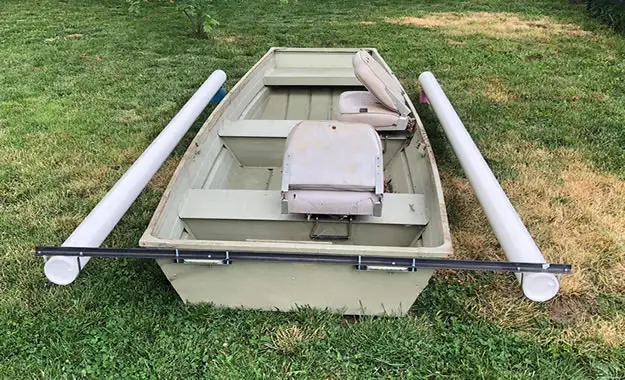
The one popular mod added for stability that DOESN’T actually stabilize your boat!
There is a misconception among many new (and not so new) boat owners that adding foam to the inside of your boat will make it more buoyant. This is simply not true!Why adding foam won’t give your Jon boat more buoyancy
The truth is, anything that’s put inside a boat will simply make the boat heavier and therefore make it sink farther into the water. This includes added foam or any other normally buoyant material. So, a Jon boat with foam inside it is actually heavier than one that has no foam in it and it will actually sit lower in the water thus defeating the purpose of putting the foam in. It will not make the boat float better. However, that does not mean you should totally dismiss the idea of adding it to your boat.Why adding foam to Jon boat is still a good idea
One very positive reason for having foam in your boat is that it gives you more time to get to shore should the boat start taking on water. It also makes it easier to recover the boat should it get submerged under water. If your Jon boat gets submerged then anything lighter than water will rise to the surface because it’s displacing water just like the hull itself once did.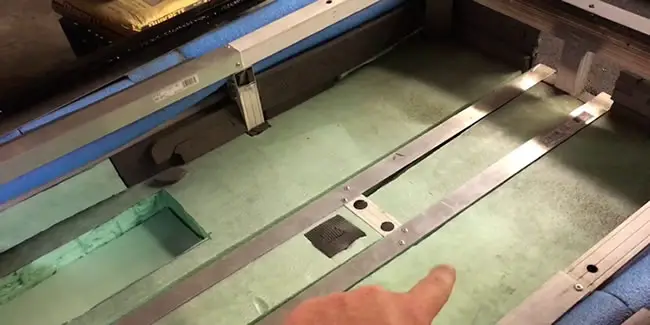
Types of foam to add to a Jon boat
Closed-cell foam is the more advisable material for buoyancy. As the name suggests the foam is closed-cell meaning that water cannot transfer from one cell to another one which avoids the foam from becoming water-logged. This foam can be easily cut into any shape to fit into all areas of your boat. The most common type of foam found is polystyrene but this is not the type you should use in a boat.Avoid polystyrene foam
This is white in color and similar to the packaging material you find in mailed boxes. This foam soaks up water like a sponge and is also not impervious to petro-chemicals; this includes petroleum and some glues. If you ever have a gas leak near this type of material, the foam will soak it up to become a serious fire hazard before it actually melts. Therefore it is not advisable to use this type of foam.Polyurethane foam is a better choice
Polyurethane foam is better than polystyrene as it will not soak up any water and neither will it be affected by petro-chemicals. A good point to polyurethane is that it is also available as a liquid pouring foam which means it can mould really well to the boat. It does have some drawbacks though. Polyurethane sheet foam can wear away with abrasion so it must first be wrapped in plastic before fitting.Polyethylene foam is probably the best choice
Polyethylene foams such as Microlen™ and Thermotec™ are probably your best choice as they offer the same benefits as polyurethane but are a lot easier to work with. Depending on the sheet thickness polyethylene can also be easily bent into curved places and it can also be compressed into place, whereas polyurethane is rigid.The best materials for a Jon boat deck to help with stability
As far as stability and buoyancy goes the material used to construct your Jon boat is unimportant. Boats float due to the displacement of water and not because the material is buoyant. Today there are a lot of options in regards to suitable Jon boat deck materials. The most popular Jon boat decking materials are:- Aluminum.
- Fiberglass.
- Wood.

